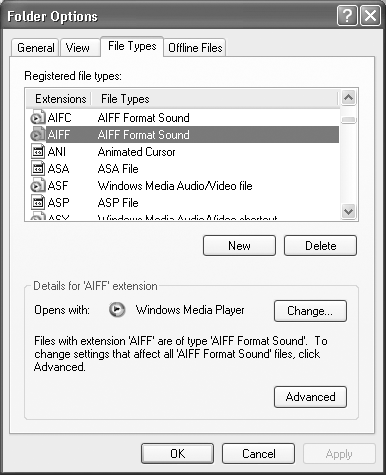Filename Extensions
Every operating system needs a mechanism to associate documents with the applications that created them. When you double-click a Microsoft Word document icon, for example, Word launches and opens the document.
In Windows, every document comes complete with a normally invisible filename extension (or just file extension)—a period followed by a suffix that’s usually three letters long. Here are some common examples:
|
When you double-click this icon … |
… this program opens it |
|
Fishing trip.doc |
Microsoft Word |
|
Quarterly results.xls |
Microsoft Excel |
|
Home page.htm |
Internet Explorer |
|
Agenda.wpd |
Corel WordPerfect |
|
A home movie.avi |
Windows Media Player |
|
Animation.dir |
Macromedia Director |
Tip
For an exhaustive list of every file extension on the planet, visit http://www.whatis.com; click the link for “Every File Format in the World.”
Behind the scenes, Windows maintains a massive table that lists every extension and the program that “owns” it. To see this list, choose Tools→Folder Options from the menu bar of any folder window. When the Folder Options box appears, simply click the File Types tab (Figure 6-8).

Figure 6-8. Each software program you install must register the file types it uses. The link between the file type and the program is called an association. This dialog box displays the icon for each file type and an explanation of the selected listing. ...
Get Windows XP Professional: The Missing Manual now with the O’Reilly learning platform.
O’Reilly members experience books, live events, courses curated by job role, and more from O’Reilly and nearly 200 top publishers.

